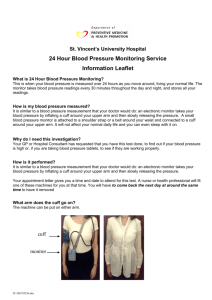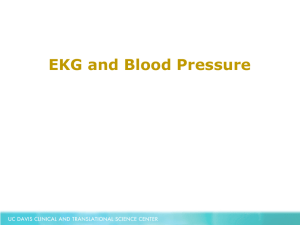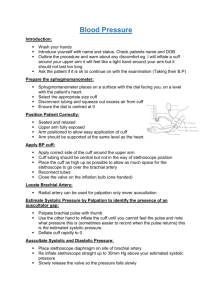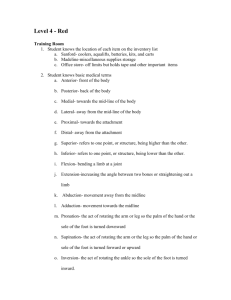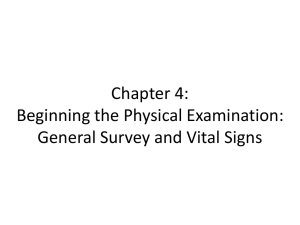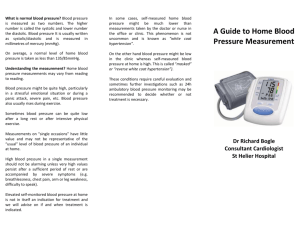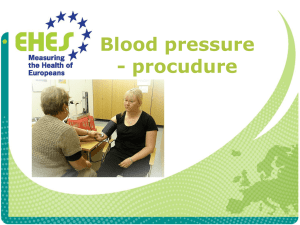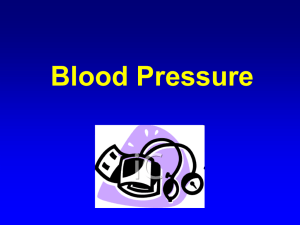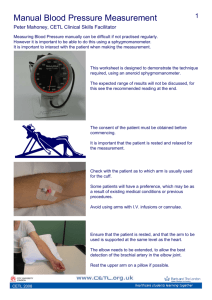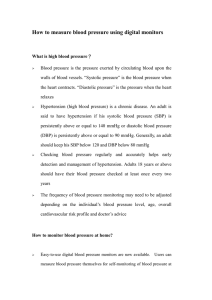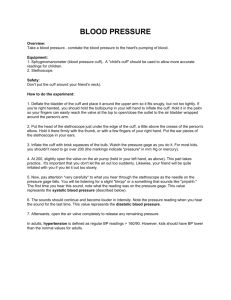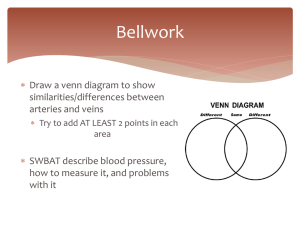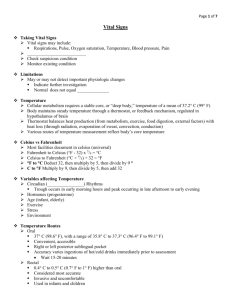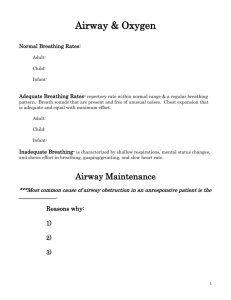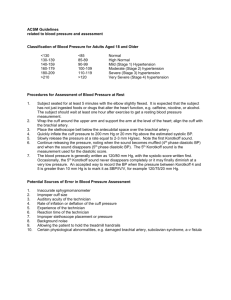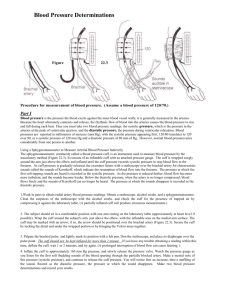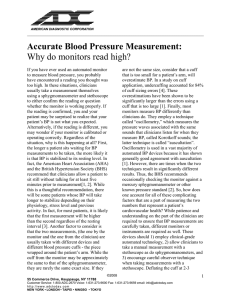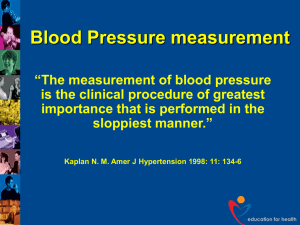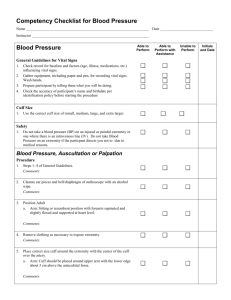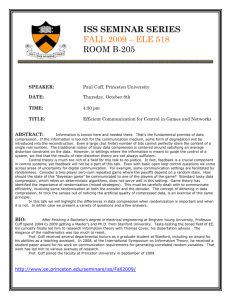Accurate Blood Pressure Measurement
advertisement
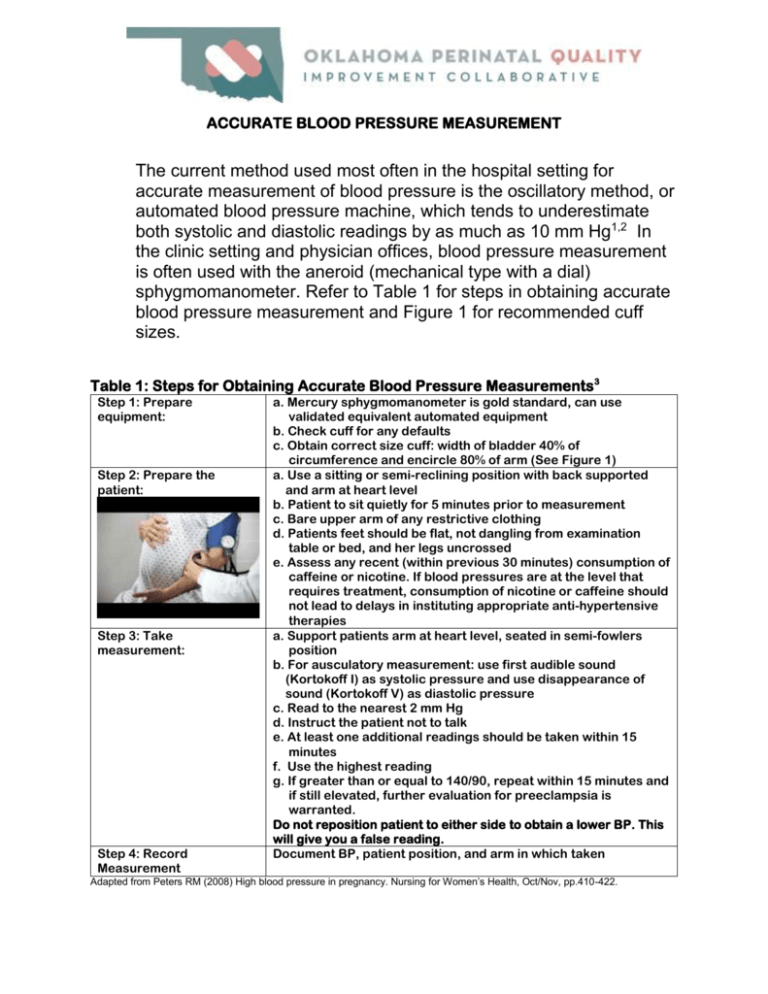
ACCURATE BLOOD PRESSURE MEASUREMENT The current method used most often in the hospital setting for accurate measurement of blood pressure is the oscillatory method, or automated blood pressure machine, which tends to underestimate both systolic and diastolic readings by as much as 10 mm Hg1,2 In the clinic setting and physician offices, blood pressure measurement is often used with the aneroid (mechanical type with a dial) sphygmomanometer. Refer to Table 1 for steps in obtaining accurate blood pressure measurement and Figure 1 for recommended cuff sizes. Table 1: Steps for Obtaining Accurate Blood Pressure Measurements3 Step 1: Prepare equipment: Step 2: Prepare the patient: Step 3: Take measurement: Step 4: Record Measurement a. Mercury sphygmomanometer is gold standard, can use validated equivalent automated equipment b. Check cuff for any defaults c. Obtain correct size cuff: width of bladder 40% of circumference and encircle 80% of arm (See Figure 1) a. Use a sitting or semi-reclining position with back supported and arm at heart level b. Patient to sit quietly for 5 minutes prior to measurement c. Bare upper arm of any restrictive clothing d. Patients feet should be flat, not dangling from examination table or bed, and her legs uncrossed e. Assess any recent (within previous 30 minutes) consumption of caffeine or nicotine. If blood pressures are at the level that requires treatment, consumption of nicotine or caffeine should not lead to delays in instituting appropriate anti-hypertensive therapies a. Support patients arm at heart level, seated in semi-fowlers position b. For ausculatory measurement: use first audible sound (Kortokoff I) as systolic pressure and use disappearance of sound (Kortokoff V) as diastolic pressure c. Read to the nearest 2 mm Hg d. Instruct the patient not to talk e. At least one additional readings should be taken within 15 minutes f. Use the highest reading g. If greater than or equal to 140/90, repeat within 15 minutes and if still elevated, further evaluation for preeclampsia is warranted. Do not reposition patient to either side to obtain a lower BP. This will give you a false reading. Document BP, patient position, and arm in which taken Adapted from Peters RM (2008) High blood pressure in pregnancy. Nursing for Women’s Health, Oct/Nov, pp.410-422. Figure 1: Recommended cuff sizes Arm Circumference (cm) 22-26 27-34 35-44 45-52 Cuff Size “Small Adult”: 12x22cm “Adult”: 16x30cm “Large Adult”: 16x36cm “Adult Thigh”: 16x42cm Accurate blood pressure measurements in obese women can be quite challenging and it is extremely important to use an appropriate sized cuff. In women with an upper-arm circumference of more than 34cm, large adult cuffs or thigh cuffs can be used to improve blood pressure accuracy. For upper-arm measurements greater than 50cm, the American Heart Association recommends using a cuff on the forearm and feeling for the appearance of the radial pulse at the wrist to estimate systolic blood pressure. However, the accuracy of forearm measurement is not reliable.4 REFERENCES 1. Natarajan P, Shennan A, Penny J, Halligan A, de Swiet M, Anthony J. Comparison of auscultatory and oscillometric automated blood pressure monitors in the settingof preeclampsia. American Journal of Obstetrics and Gynecology. 1999;181 (5 Pt1):1203-1210. 2. Ogedegbe G, Pickering T. Principles and techniques of blood pressure measurement. Cardiology Clinics. 2010;28(4):571-586. 3. Peters R. High blood pressure in pregnancy. Nursing for Womens Health. 2008;12(5410-421; quiz 422). 4. Pickering T, Hall J, Appel L, et al. Recommendations for blood pressure measurement in humans and experimental animals: part 1: blood pressure measurement in humans: a statement for professionals from the Subcommittee of Professional and Public education of the American Heart Association Council on high blood pressure research. Hypertension. 2005;45:142. Adapted from content of the California Maternal Quality Care Collaborative Toolkit, Improving Health Care Response to Preeclampsia, 2014

